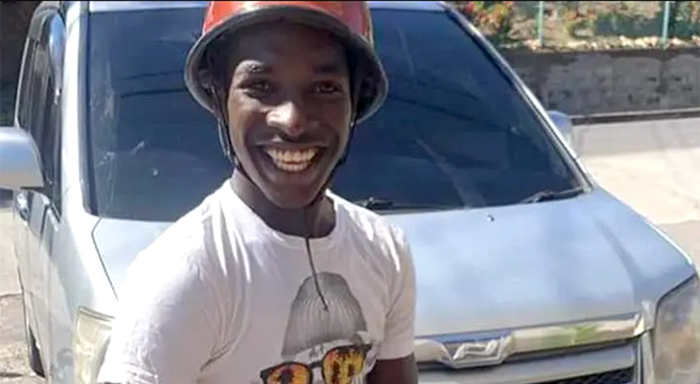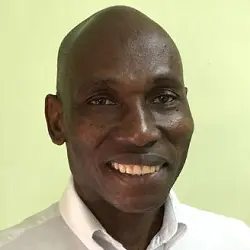“Lord! With all that evidence? That’s a wicked verdict.”
The death-by-misadventure verdict delivered last Wednesday amounts to the second killing of Cjae Weekes, the 17-year-old boy who was chased to his death by police officers in February 2022. The inquest confirmed my long-held view that in St. Vincent and the Grenadines, Justice has two faces. The verdict, which means that the police officers who chased Cjae to his death bear no criminal responsibility, is a travesty of justice.
The coroner’s inquest was not a search for facts, truth or justice. It was a trial of the actions of Cjae Weekes rather than how or why he died. It represented a monumental cover-up that began with the tampering of the potential crime scene by the officers who chased Cjae, the Office of the Director of Public Prosecutions, up to and including the Prime Minister’s Office.
After Coroner Kaywana Jacobs, a junior and inexperienced magistrate, ruled that I would not be allowed to ask any questions of the witnesses, a foreboding, confirmed by the verdict, gripped my being. I was denied an opportunity to ask questions at a coroner’s inquest before.
The most explosive evidence came from Andeen Douglas and her uncle, Shillingford Douglas. Andeen Douglas testified that she was summoned to PM Gonsalves’ office, where she gave a statement. She testified that on arrival at the scene, she took photographs and video of the area, including Cjae. She was asked to turn over her phone, which she did to a member of PM Gonsalves’ security detail. She said that after the phone was returned to her, it never worked again, even after she sent it to New York to get it checked out.
Andeen Douglas told the coroner that among the pictures she took was one which appeared to her as tyre impressions on the white t-shirt Cjae was wearing on the day police chased him to his death. Incidentally, this evidence supports the statement Cjae gave to his mother before he passed away that the police vehicle was on top of him after both vehicles flew over the incline.
The immediate question is, why would the PM’s office get so intimately involved with a potentially criminal investigation? More importantly, why was the phone disabled? The answer to the question was revealed at the inquest. Inspector Nero, the chief investigator, presented the pictures taken from Andeen’s phone to the inquest. However, there were no pictures of Cjae, which made it difficult to confirm Andeen Douglas’s testimony or Cjae’s statement to his mom.
Amazingly, neither the coroner nor the prosecutor, Corlene Samuel, asked Nero for the video footage or photos of the image that Andeen described. I know prosecutor Samuel. I have faced off against her numerous times. Her forensic skills in search of the truth were woefully absent during the inquest. She clearly had a skin in the game — a case of police protecting police.
Andeen and her uncle were the first civilians to arrive at the crime scene. She saw the chase and told the coroner that no more than a foot separated the police vehicle from the dirt bike on which Cjae was desperately trying to evade the officers. She testified that she heard a sound which, to her mind, was like something running into or hitting an object.
Andeen’s estimate of the distance which separated the police vehicle from Cjae’s bike was confirmed by her uncle, Shillingford Douglas, who also saw the chase and rushed to the scene. Shillingford’s testimony was that when he heard the sound of impact, he said, “Like somebody dead over dey”, jumped into his vehicle and rushed to the scene. It was Shillingford who took Cjae to the hospital. He testified that while there, he noticed the police were leaving and inquired of them. He said the police officers told him why stay when “the boy dey in dey ah dead”.
The police officers presented what was clearly false evidence: that the police vehicle remained at least 30 feet from Cjae’s bike throughout the chase. This evidence is belied by the fact that both the bike and the police vehicle went flying down the hill when they came to a break in the road. If the police were as far behind as they claimed to the coroner, they would have been able to stop their vehicle before it followed Cjae over the unpaved road.
The coroner seemed unsure as to how to treat the evidence of Cjae’s mother, which was what Cjae told her. In law, this is called hearsay evidence, and there are restrictions on how this evidence is to be used. But this is an inquest, which is a search for the truth. But the coroner ruled that Cjae’s mom’s statement was hearsay, and no one made an application to get it into evidence. It was her inquest. Whose task was it to marshal all of the evidence? She could have ruled Cjae’s statement to his mom as a “dying declaration”, which is an exception to the hearsay rule. Alternatively, she could have invoked the res gestae rule, which allows for the inclusion of utterances that capture the immediacy and emotional intensity of an occurrence without reflection or fabrication.
Unanswered questions abound: Why did the police tamper with the potential crime scene? Why did they move the police vehicle back onto the road? Why did they move Cjae and place him into the police vehicle when they knew one of the vehicle’s wheels had broken off? Why such a short statement from the female police officer, who, from the video that was in the public domain, was clearly in evident distress? Why did the police tamper with Cjae’s bike at the police garage at Arnos Vale? Why were there no questions of pathologist Dr. Ronald Child on whether there were internal injuries that may have caused Cjae’s death?
Until police officers are made to account for their wrongdoing, the brutality against the poor and vulnerable will continue.






